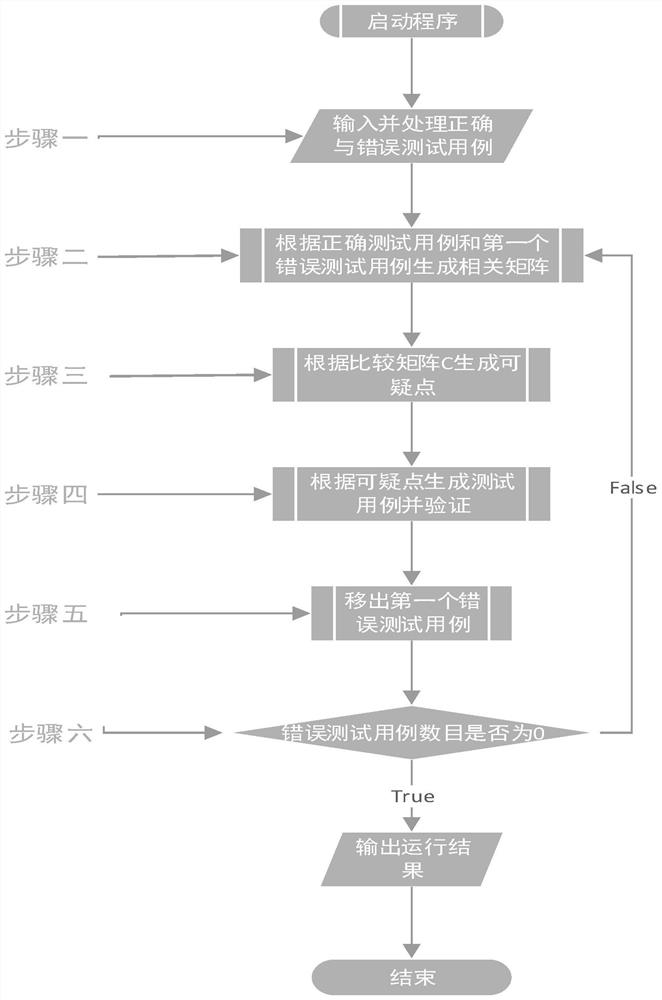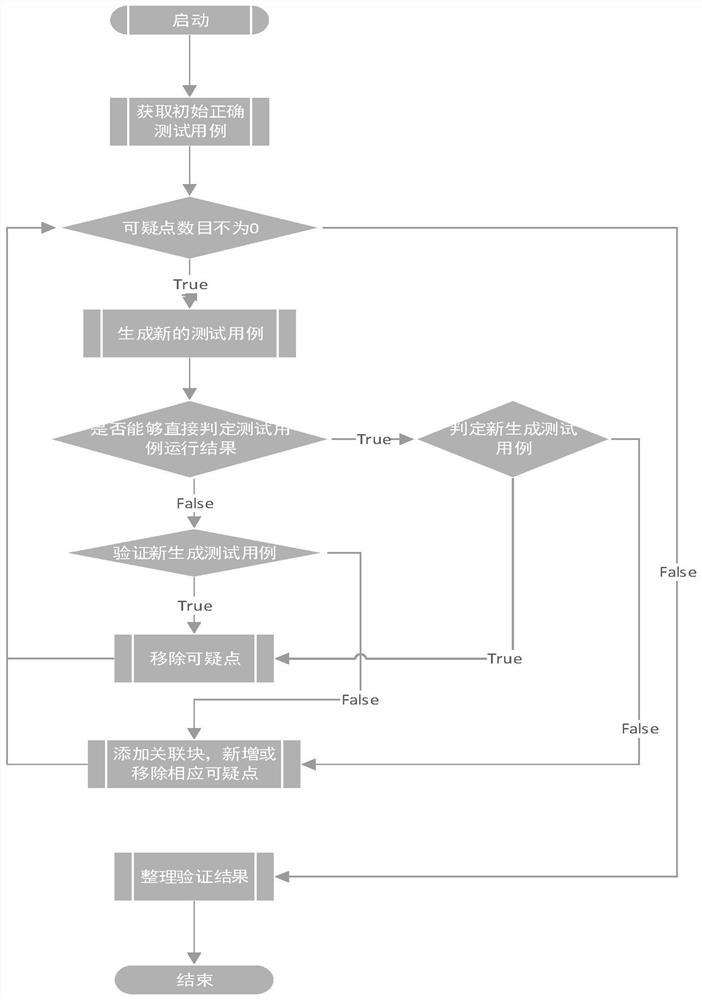A method of obtaining dependencies among process modules based on test cases
A technology of test cases and dependencies, applied in software testing/debugging, error detection/correction, instruments, etc., can solve problems such as low verification efficiency, achieve the effects of convenient analysis, improved verification efficiency, and reduced verification times
- Summary
- Abstract
- Description
- Claims
- Application Information
AI Technical Summary
Problems solved by technology
Method used
Image
Examples
specific Embodiment approach 1
[0027] Specific implementation mode one: combine figure 1 Describe this embodiment, a method for obtaining dependencies between process modules based on test cases in this embodiment The specific process is as follows:
[0028] Definition 1 (">>"):
[0029] A binary operator that means modules enforce order of execution.
[0030] Use form: module A >> module B.
[0031] Example: A>>B means that module A must be executed before module B.
[0032] Definition 2 (">"):
[0033] Binary operator, indicating the execution order of modules, the main purpose is to distinguish from ">>"
[0034] Use form: Module A>Module B.
[0035] Example: A>B means that module A is executed before module B in a certain test case.
[0036] Definition 3 (associated blocks):
[0037] There are two modules A and B, and it is required that A>>B, then A and B are associated blocks, recorded as A>>B.
[0038] Definition 4 (test case):
[0039] In the present invention, the input of the test case is...
specific Embodiment approach 2
[0054] Specific embodiment two: the difference between this embodiment and specific embodiment one is: input and process correct and wrong test case in the described step one, test case includes all process modules (test case input is the execution sequence of process module, includes all Process module; the output is the execution result of the sequence: correct or wrong); the specific process is:
[0055] Input and obtain test cases and simplify, the specific steps are as follows:
[0056] Step 11, input correct test case and wrong test case;
[0057] Step 12: Set m modules in all n processes contained in a test case, and convert the module name to S 1 -S m form, if S i ,S j are modules in the same process, and have S i >S j , then the S i >>S j set as associated block;
[0058] Si >S j means S i module in S j Execute before the module; S i >>S j means S i module must be in S j Execution before the module, S i ,S j is an associated block;
[0059] The valu...
specific Embodiment approach 3
[0062] Specific implementation mode three: the difference between this implementation mode and specific implementation mode one or two is that the module name is converted into S in the step one or two 1 -S m The transformation rules of the form are:
[0063] S i_k according to mapped to Sj,
[0064] Among them, S i_k Indicates the kth module of the i-th process, where k is S i_k The position in the i-th process, Sj is the j-th module after mapping; m a Indicates the number of process modules of the ath process;
[0065] Conversion example:
[0066] Process 1: S 1_1 , S 1_2 , S 1_3 , S 1_4
[0067] Process 2: S 2_1 , S 2_2 , S 2_3
[0068] Process 3: S 3_1 , S 3_2 , S 3_3 , S 3_4
[0069] S 1_3 corresponds to j as i.e. S 1_3 mapped to S 3
[0070] S 2_2 corresponds to j as 4 means the number of the first process module, 2 means S 2_2 It is the second module in the process, S 2_2 mapped to S 6
[0071] S 3_3 corresponds to j as 4 means the ...
PUM
 Login to View More
Login to View More Abstract
Description
Claims
Application Information
 Login to View More
Login to View More - R&D
- Intellectual Property
- Life Sciences
- Materials
- Tech Scout
- Unparalleled Data Quality
- Higher Quality Content
- 60% Fewer Hallucinations
Browse by: Latest US Patents, China's latest patents, Technical Efficacy Thesaurus, Application Domain, Technology Topic, Popular Technical Reports.
© 2025 PatSnap. All rights reserved.Legal|Privacy policy|Modern Slavery Act Transparency Statement|Sitemap|About US| Contact US: help@patsnap.com



